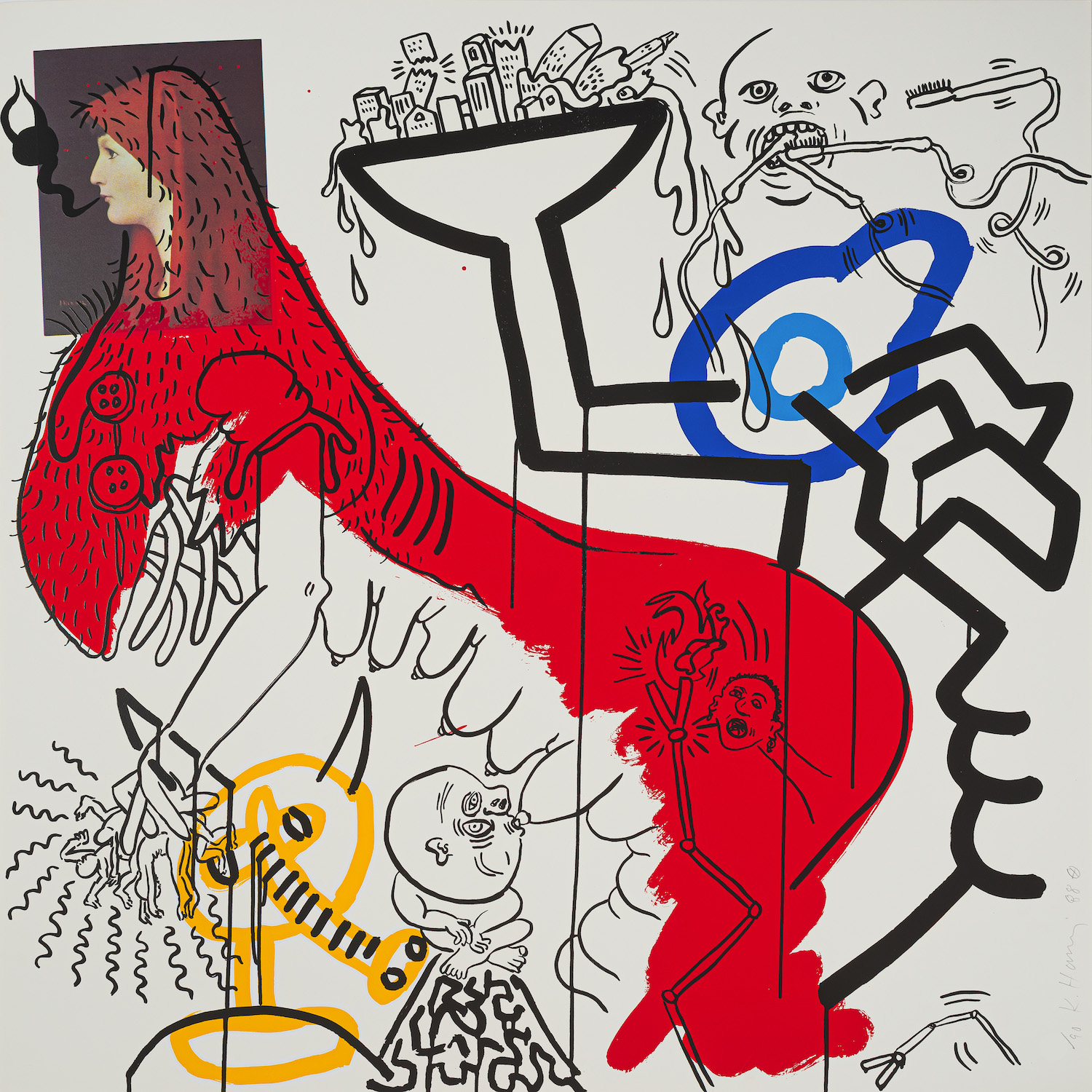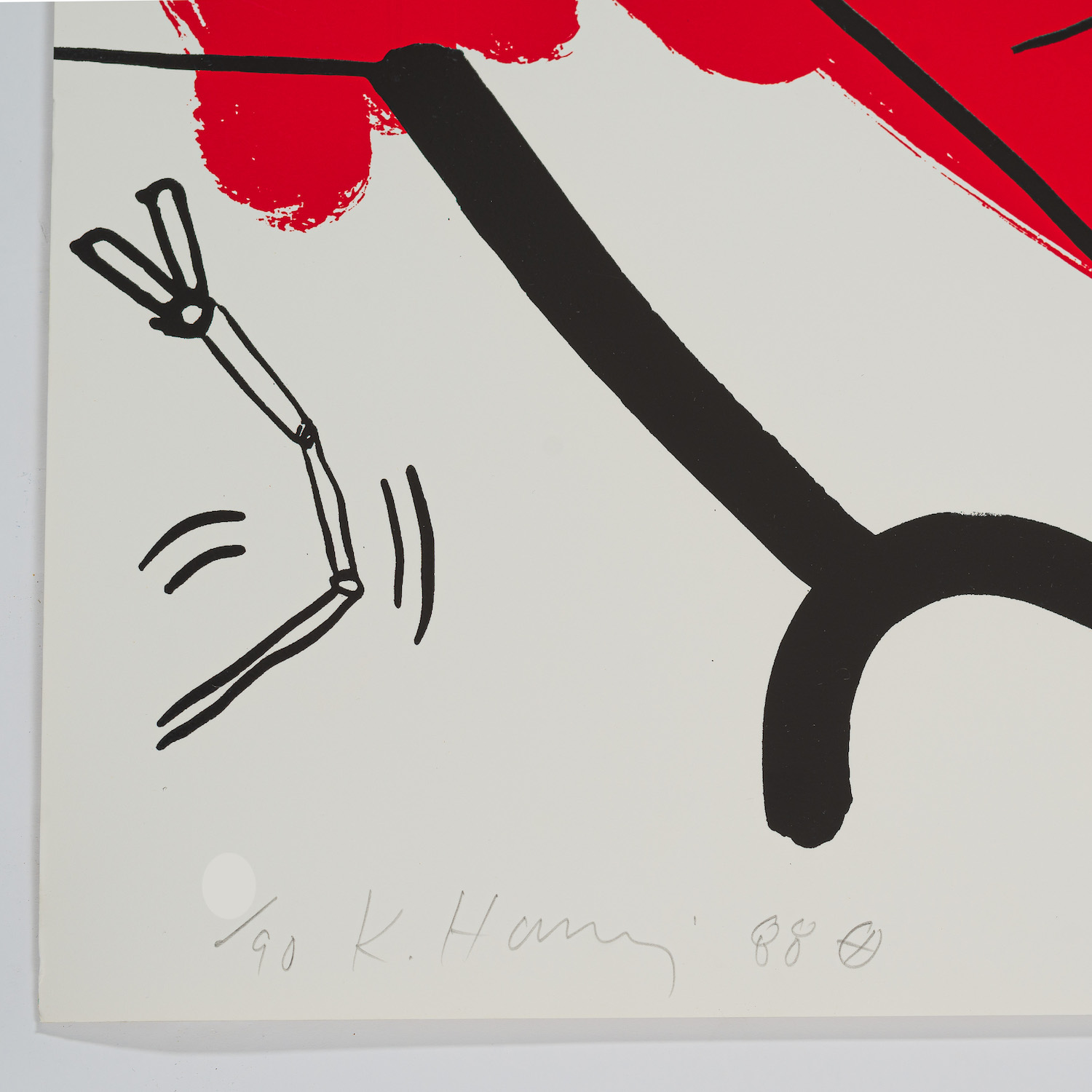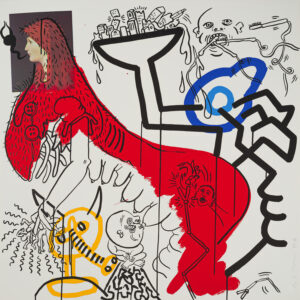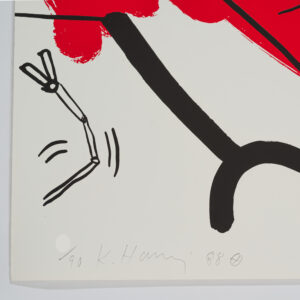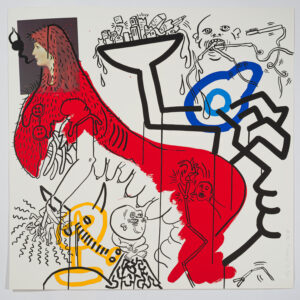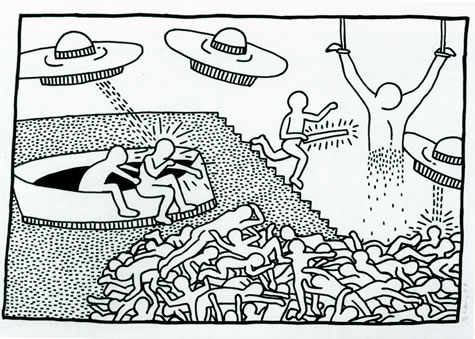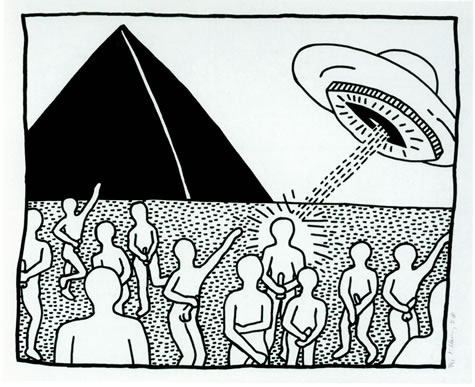Amidst the potent backdrop of William Burroughs’ text, Apocalypse (4) by Keith Haring dives deep into the chaotic world where household appliances assert dominance and nature itself turns nightmarish. The piece masterfully encapsulates the turmoil of rebellion and the blurred lines between sanctity and monstrosity.
Page 4
The household appliances revolt: washing machines snatch clothes from the guests, bellowing Hoovers suck off makeup and wigs and false teeth, electric toothbrushes leap into screaming mouths, clothes dryers turn gardens into dust bowls, garden tools whiz through lawn parties, impaling the guests, who are hacked to fertilizer by industrious Japanese hatchets. Loathsome, misshapen, bulbous plants spring from their bones, covering golf courses, swimming pools, country clubs and tasteful dwellings.
The composition is vividly divided: bold, intersecting lines, suggestive of machinery or conduits, anchor the right side, while a raw, impassioned sweep of red color engulfs the left. Amidst this visual dichotomy emerges a grotesque figure, whose head is borrowed from Jean-Jacques Henner’s portrait of Saint Fabiola. This choice of imagery is poignant: Saint Fabiola, a symbol of penance, redemption and care for the ill, becomes a grotesque chimera with multiple breasts. Her sanctity is further juxtaposed by the depiction of a cubist-inspired boy, with an unsettling dual-eye design on one side of his face, fervently nursing from her.
The extended arm of this monstrous Fabiola creature becomes the scene of another harrowing tale: her fingers ensnare a multitude of people, as if they’ve been plucked from their very existence. The recurring motif of the black devil sperm finds its place here, with its tail ominously emerging from the mouth of the saint.
Drawing from William Burroughs’s vivid imagery, where household appliances surge in rebellion and wreak havoc on humanity, Haring transforms familiar objects into menacing entities: the benign vacuum evolves into a menacing gas mask, garden shears mutate into lethal claws, and a washing machine morphs into an evil eye. Atop the bold structures on the right, a funnel precariously balances a collapsing city that appears to teeter on the edge of annihilation. Adjacent to this crumbling metropolis is a face under siege, humorously yet distressingly accosted by electric toothbrushes, driving home Burroughs’ dystopian imagery.
Apocalypse (4) is an intricate dance of contrasts: of reverence and horror, of the mundane and the apocalyptic. Haring’s unerring ability to blend historic iconography with contemporary anxieties crafts a narrative that’s both jarring and deeply thought-provoking.

